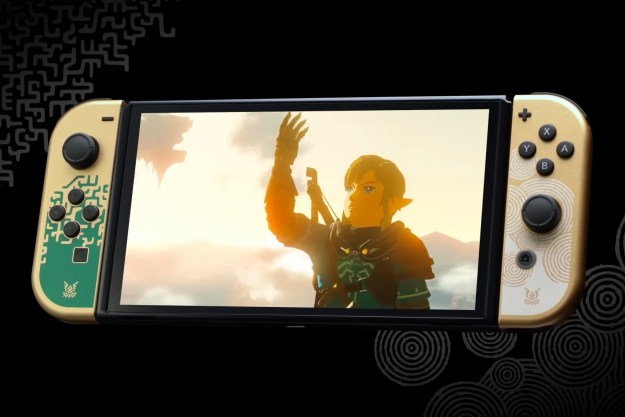Most of the Nintendo Direct detailed many new features coming to Arms. The game is out for the Switch next month and offers a unique take on boxing that only Nintendo could deliver. Players can choose from a variety of different interchangeable “Arms” in order to perform special attacks, and the game makes use of the Switch’s two Joy-Con controllers in a similar way to the Wii Sports‘ boxing game on the original Wii.
While combat customization in Arms is well known, the Direct revealed how much deeper the system goes. Different “Arms” vary in weight, type, range, and attributes. Heavier Arms are more powerful but slow down a player’s momentum. Each set of Arms has one of seven different attributes including Fire, Electricity, Wind, Ice, Stun, Explosion, and Blind. Each type has its own advantages and disadvantages whether playing offensively or defensively. Mixing and matching different Arms is key to victory.
As players fight in Arms, they accumulate in-game currency to use at the Arms Getter. This is where players get the chance to earn new Arms. When players earn one they already have, it becomes an upgraded version.
Later in the direct, Nintendo shared some of the many modes that are available in Arms. Fight is the main multiplayer mode. Here players fight against each other one-on-one. Like other multiplayer Nintendo games, a variety of items including bombs and healing items will randomly drop in. Team Fight is very similar, but this time battles consist of teams of two. Here, attacks can damage allies, so paying attention is key.
Aside from more traditional fighting, Arms features some more unique game modes. V-Ball is a version of volleyball in which players must knock an explosive ball into the opponent’s court. Hoops tasks players with grabbing opponents and shooting them into a net like a basketball. Skillshot involves breaking as many targets as possible. Hitting multiple targets at once will activate a multiplayer for higher scores. For honing skills and trying out different Arms, players can check out Arms Test and Training.
With a multiplayer focus, it’s key to have a variety of ways to play. In Arms, friends can either play online or locally. Grand Prix is a local mode where one or two players must win ten straight matches before facing a final opponent. In a Party Match, up to four players can battle online at once in the same lobby. One lobby holds up to 10 systems, but with two players allowed per system, up to 20 players can join in a single lobby.
For showing off to friends, players can take part in Ranked Match. Here, players compete with each other one-on-one. Winning or losing a match will increase or decrease a rank respectively. If friends want to play together locally, up to eight players on eight systems can connect to one another.
At launch, ten different characters are playable in Arms. Each has their own fighting style and personality. Already revealed were Spring Man, Ribbon Girl, Ninjara, Master Mummy, Min Min, Mechanica, and Helix. Announced today were Kid Cobra, Twintelle, and Byte and Barq. Byte and Barq are especially unique as they are two fighters in one. Byte fights as a typical fighter while Barq attacks opponents at random. In the future, Arms will receive free software updates that include new fighters, stages, and Arms.
Just like with Splatoon 2, Arms offers free trail periods to test the game during its Global Testpunch. During the weekends of May 26-28 and June 2-4, players will have a chance to try it out before the game releases on June 16. The free demo is available now on the Nintendo eShop.
Before signing off, Nintendo revealed an extra trailer for Splatoon 2. This time, the trailer focused on the new single-player mode. Callie, one of the Squid Sisters from the first game, has gone missing. Her best friend Marie tasks the player to find her and the Great Zapfish. Just like in Splatoon, players will use different weapons to fight enemies, tackle bosses, and overcome obstacles. Splatoon 2 launches on Switch July 21.
Are you excited for Arms, or are you more interested in the games Nintendo has planned for the Switch down the road? What are you playing on the system right now? Let us know in the comments!
Editors' Recommendations
- Everything announced at February’s Nintendo Direct Partner Showcase
- Nintendo introduces a new Super Smash Bros. Switch OLED for Black Friday
- Everything announced at the September 2023 Nintendo Direct
- Super Mario Bros. Wonder Direct: how to watch and what to expect
- Everything announced at the June 2023 Nintendo Direct


